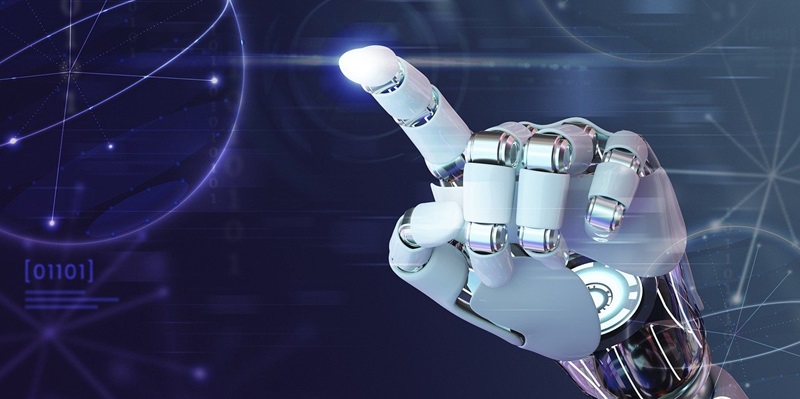As we venture into the year 2024, the artificial intelligence (AI) industry stands at a crucial juncture. While numerous advancements and opportunities loom on the horizon, there are also challenges that must be navigated. This article explores the key challenges and predictions for the AI industry in 2024, ranging from the closure of generative AI companies to the potential life-saving impact of AI in healthcare.
Many Generative AI Companies will Face Closure
The world of generative AI has seen exponential growth in recent years, with companies using algorithms to create innovative and creative content. However, the landscape is becoming increasingly competitive, and not all companies will survive. The market will likely witness consolidation, with only the strongest players continuing to thrive.
AI’s Potential in Saving Lives Through Medical Advancements
One of the most promising avenues for AI lies in healthcare. Scientists and researchers are leveraging AI to analyze vast amounts of human genomic data, helping them develop new treatments and diagnostics. By understanding the intricate interplay of genes and diseases, AI can assist in providing personalized and targeted therapies, potentially saving countless lives.
AI’s Role in the Psychedelics Industry for PTSD Treatment
In the emerging field of psychedelics, AI is finding unique applications. Mindstate, a portfolio company, is utilizing AI to leverage its extensive data set of trip reports. By analyzing this data, AI algorithms are being trained to create new “states of mind” to aid in the treatment of PTSD, particularly for those who are treatment-resistant. This amalgamation of technology and psychopharmacology opens up exciting possibilities for mental health treatments.
The Impact of Multimodal Models on Human-computer Interactions
Interacting with AI agents is set to become more intuitive and compelling, thanks to multimodal models. These models combine various modes of communication, such as text, speech, and images, to enhance the overall user experience. The quality of AI algorithms is advancing to a point where distinguishing between human and machine is becoming nearly impossible in certain use cases, thereby revolutionizing human-computer interactions.
Increase in the availability of open-source AI models is expected in 2024 as more models are released. This democratization will enable developers and researchers to leverage pre-trained models as starting points for their projects, accelerating innovation and reducing duplication of efforts. Open-source AI models will play a vital role in fostering collaboration and knowledge sharing within the AI community.
The Ongoing GPU Shortage is Affecting Startups
Startups in the AI industry are grappling with the persistent shortage of GPUs. The demand for high-performance GPUs for AI processing has surged, causing supply chain disruptions. This scarcity impedes new companies from bringing their products to market, hindering innovation and potential growth. Startups will need to explore alternative solutions and adapt to overcome this obstacle.
The importance of chip packaging in addressing AI chip shortages is often overlooked. Contrary to popular belief, the shortage is not solely due to a scarcity of AI chips themselves. The Chairman of the Taiwan Semiconductor Manufacturing Company (TSMC) recently highlighted the significance of advanced chip packaging capacity, known as COWOS, in addressing the shortage. This specific area requires attention and investment to optimize chip production and mitigate supply chain challenges.
Anticipated Major Releases from Apple in 2024, Possibly Including Their Own GPT
Apple, a major player in the tech industry, has been making noteworthy strides in AI. Speculations abound that Apple may unveil significant AI-related releases in 2024, potentially introducing their own Generative Pre-trained Transformer (GPT) model. Such developments from Apple could have far-reaching implications for the AI landscape and the tech giant’s market dominance.
The growing knowledge and utilization of chiplets in the AI industry is becoming more prominent. Chiplets, which are smaller semiconductors that can be combined to form a larger chip, are seen as a potential tool to enhance overall chip performance and enable faster innovation cycles. As 2024 progresses, more individuals and organizations will become acquainted with chiplets and comprehend their potential. This understanding will become a cornerstone of AI development and deployment.
The Benefits of Edge-to-cloud or Hybrid AI Integration
Edge-to-cloud, also referred to as hybrid AI, is an integration that combines the power of cloud computing with edge devices such as smartphones, laptops, vehicles, and IoT devices. This integration offers numerous advantages, including improved performance, personalization, privacy, and security. In 2024, the adoption of edge-to-cloud AI will continue to rise as more industries recognize its potential and embrace its benefits.
The year 2024 holds both challenges and promises for the AI industry. Generative AI companies may face closures, but AI’s potential to save lives through medical advancements and its role in the psychedelics industry offers hope for a better future. Multimodal models and open-source AI models will enhance human-computer interactions and foster collaboration. Mitigating the GPU shortage and addressing chip packaging challenges will be crucial for progress. Anticipated major releases from Apple and the growing knowledge of chiplets will shape the course of AI development. Finally, edge-to-cloud integration will unlock new possibilities in performance and security. As we embark on this journey, let us be prepared for the dynamic and transformative nature of the AI landscape in 2024.

